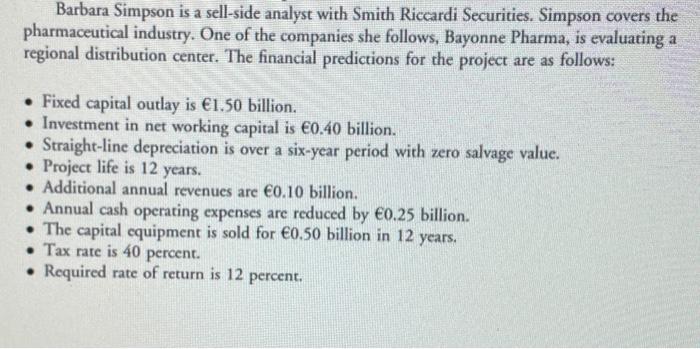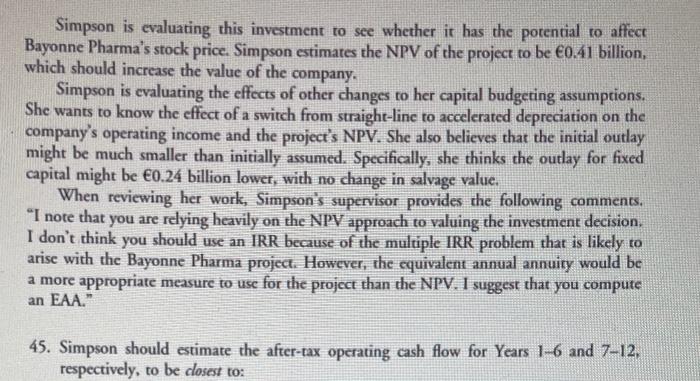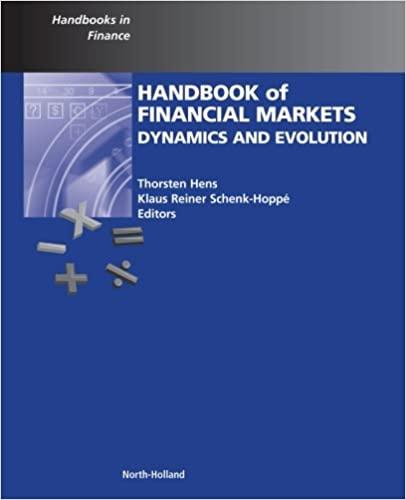Answered step by step
Verified Expert Solution
Question
1 Approved Answer
what is the NPV? if the Outlay was .24 billion lower what would the NPV increase by? Barbara Simpson is a sell-side analyst with Smith


what is the NPV?
if the Outlay was .24 billion lower what would the NPV increase by?
Step by Step Solution
There are 3 Steps involved in it
Step: 1

Get Instant Access to Expert-Tailored Solutions
See step-by-step solutions with expert insights and AI powered tools for academic success
Step: 2

Step: 3

Ace Your Homework with AI
Get the answers you need in no time with our AI-driven, step-by-step assistance
Get Started


